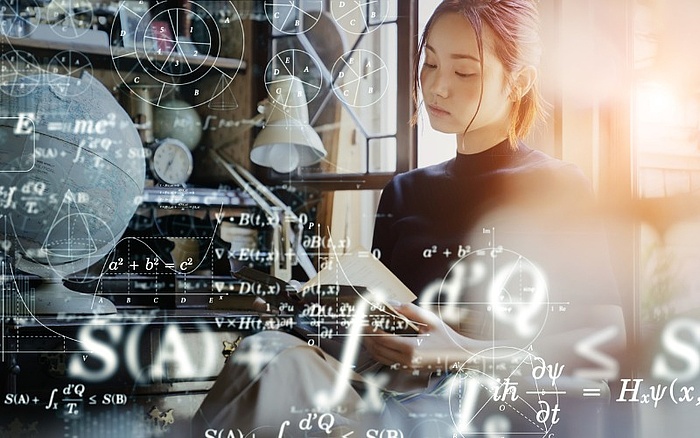
Can an AI think like an IP professional?
Regardless of what industry you are in, you have probably heard on the street or from a marketing department that: "AI is everywhere, and it is going to change everything." While it is true that many things we see and use in the digital realm are, to some extent, based on AI, the industry disruption that has long since been looming is yet to materialize. And so, what AI can do for you today may not be what you expect.
If you recently read about the release of Beethoven's 10th symphony, completed from a collection of the composer's loose sketches by an AI under the firm supervision of a team of experts, you might wonder what AI can accomplish. Is AI the "genius" behind the composition or a mere instrument?
A very similar question is currently heavily debated in Intellectual Property (IP) circles: Can AI be an inventor? Needless to say, is it a complex topic without a straightforward answer and certainly beyond the scope of this article. However, if we return to the surer ground of the "composer or instrument" matter, we can illustrate how AI can be, at the very least, a powerful tool in the right hands.
What technology can do
The true power of machine-based intelligence lies in the amount of data it can process in a short time. If you then train it to detect patterns in said data independent of user direction, you have a formidable piece of technology at your disposal. Of course, the devil is in the detail. On the one hand, the data must be structured to allow efficient processing and analysis. On the other hand, the quality or usefulness of any AI tool for the user is determined by the training and fine-tuning applied by the system's creator. In an IP context, using some generic text-analysis algorithms to query a patent database is likely not going to yield the best results. The language used in patents is abstruse enough for many humans, let alone machines. Consequently, any system intended to search patents must be precisely calibrated to the intricacies of patent language itself and, potentially, those of individual technology fields as well.

AI's ability to gather vast quantities of data and then identify patterns therein far exceeds our own. But rather than serving as a replacement, the computer's processing power acts as a complement to human intuition and imagination in the world of patents.
Aside from efficient patent retrieval, machine learning algorithms can also analyze patent datasets. One way they can do this is by collating statistical measures which are purely count-based such as the patent family size and the number of citing documents. These indices are not new and allow for a cursory analysis of your data. That being the case, depending on the purpose of your research, modern patent analytics can give you robust metrics to gain deeper insights into a given dataset. Many service providers now offer patent value estimators to present you with some indication of the monetary value of a patent. Just as with the methods for searching patents, these metrics need to be applied circumspectly to make a valuable contribution to your IP analysis efforts.
What you bring to the table
If AI-based functionalities are expected to make such an impact on patent analysis, how can you assess the quality of their output? We propose a simple approach that you can try for yourself. Take a patent search you worked on previously, pretend to do it for the first time - only this time with the aid of an AI - and compare the results.
A few aspects are critical to the success of this test. Firstly, take your time to understand how to feed the program the information necessary for its assignment. The system will likely need some degree of context to understand your query better. As such, going in with a few Boolean-style keywords will probably only land you very broad results. Secondly, try to find an iterative way to optimize your results. If there are more ways to input the data you want to focus on, do so. The more precisely you can tell the AI what you are looking for, the more accurate the results will be. Finally, be open to unexpected outcomes the program might return. From your point of view, they might seem like an error; but if you analyze these ostensibly wrong findings and determine why they came up, you will understand the system's inner workings more clearly. When all is said and done, the machine does not think like you, nor can it read your mind.
Keeping a digital eye on the competition
But AI has promised the IP professional investigation, not just automation. Where can we see this implemented? Let us look at a practical example: technology monitoring. From a business perspective, it is vital to stay up to date on what the competition is doing and recognize who may be entering your market space. Yet, this is a task that is often neglected or seen as the 'Friday afternoon optional' task. Some companies set up their monitoring profiles only once, letting them run for more than a decade, growing ever more outdated. Doing this risks falling behind in adaptive technology landscapes that are hard to grasp with static Boolean queries.
The reasons to put off establishing a comprehensive monitoring framework are compelling: It is a complicated and time-intensive task to identify the correct query. In Boolean terms, this always means a compromise between catching all relevant documents and creating too much noise. Later in the process, this noise and the lack of a 'sort by relevance' ranking discourages users from analyzing new publications.

Monitoring what your business competitors are developing helps you stay at the forefront of your industry. When you take your eye off the ball, you risk having to play catch-up.
This is where modern techniques such as deep learning can far excel the Boolean method. This computational process allows for even more precise information retrieval by building extensively detailed models that learn the patterns of your training data on a profound level. A deep neural network that can be tailored to your individual profile will develop something akin to an understanding of your taste in patents and technology, checking new publications periodically to retrieve those most relevant to you. The brilliance of this approach lies in how easy it is to set such a system up. All you need to do is give it a list of patents relevant to you and somewhat related to one another by technology. Likely, you have already accumulated such a list in the course of earlier analyses. With your preferences set, the neural network will automatically display the results by relevance, giving you a way to prioritize the outputs. Over time, such systems can learn from your feedback to refine their understanding of your inclinations.
The hype surrounding AI is undoubtedly well deserved: From composing lost symphonies to alleviating your everyday workload, the applications promised by the latest computing technologies seem limited only by our imagination. As we have seen, AI has already been able to help IP professionals cut down on time spent trying to find relevant patents. And this should come as no surprise since the technology will only continue improving and evolving with more data input from users like you. One such AI-driven system is Octimine, geared to delivering the most applicable patents in the shortest time. Discover what its modern methodologies can offer your company and unlock your IP team's full potential!
A version of this article was originally published on the WIPR website, January 14, 2022.
Filed in

Take an in-depth look at medical devices and how IP will foster, inform and protect more innovative healthcare experiences.



